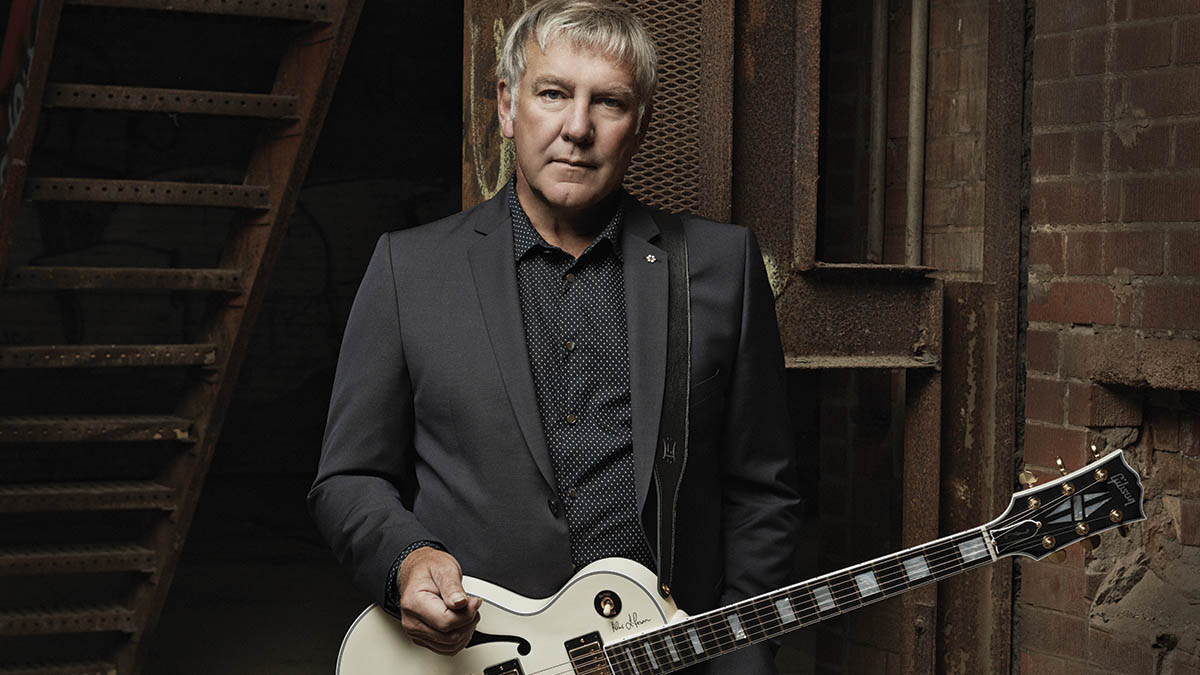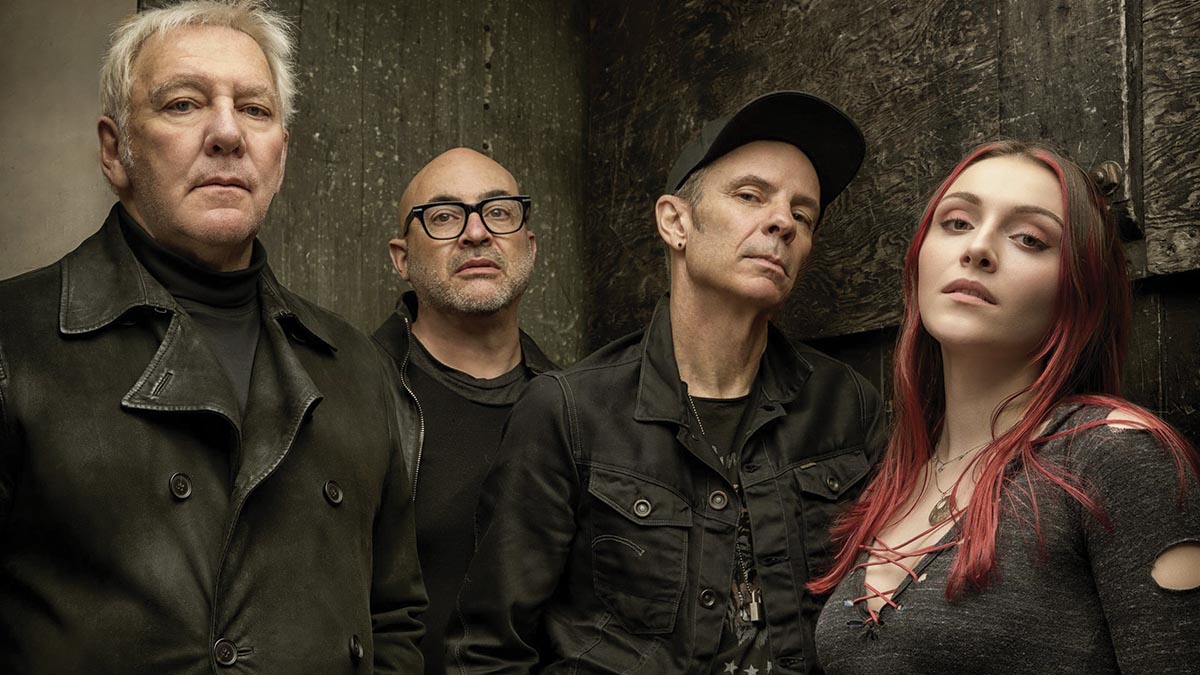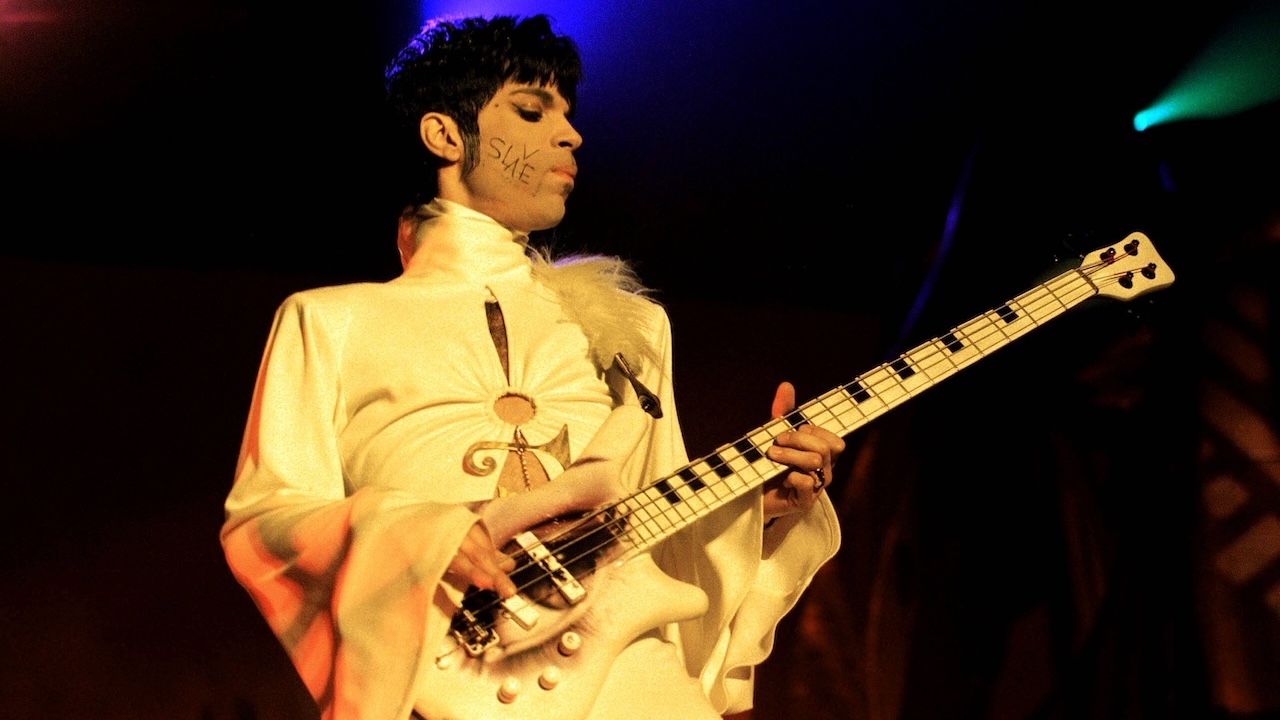Alex Lifeson on life after Rush and finding a new sound with Envy of None
The legendary Rush guitarist is taking a scaled-down approach to his new project but, as he explains, making “ear candy” that suits the song takes focus – and lots of it

Alex Lifeson’s place in music history as a premier prog player cannot be understated. Across five decades with Rush, the Toronto-based guitarist delivered thrill-rides of dramatic arpeggios, quixotic whammy-play and irregular hooks galore.
But seven years on from Rush’s final concert performance – and two since the tragic loss of drummer/lyricist Neil Peart to glioblastoma, a form of brain cancer – Lifeson returns this spring with music from his much-anticipated, and stylistically divergent new project, Envy of None.
The fledgling group’s sonic aesthetic is quite a pivot from what longtime Rush fans may be expecting from the Canadian guitar hero – some of the darkly cinematic, synthesized soundscapes of the quartet’s 11-song, self-titled effort arguably hew closer to the moody swerve of Violator-period Depeche Mode or Nine Inch Nails than the soaring prog elasticity of, say, YYZ or La Villa Strangiato.
Though not without its giant guitar moments, Lifeson’s purview within Envy of None’s first album was to play with texture more so than high-flying, trem bar-heavy lead work.
“I feel like I’ve fully explored the whole area of soloing,” Lifeson tells Guitar World. “I think I have a particular style and character to my solos, [and] there’s lots of variation in my soloing, but I think at this point in my life it’s more about servicing the song. Not being too distracting, or shining a light on any particular thing. It’s just getting into the groove, tapping your foot and feeling connected with the song itself.”
Though Lifeson is excited to be taking himself in a new sonic direction, Envy of None’s debut album nevertheless follows Rush’s staggeringly impressive and iconic body of work – Canada’s greatest power trio left a wholly immeasurable imprint on music fans across 19 full-length albums and countless mind-bending live performances.
While Lifeson revealed in 2018 – some 50 years after forming Rush as a teenager – that the group were basically done, he clearly hadn’t closed the book on music altogether. At the time of that announcement, he’d already been drafting the original passes of tunes like Envy of None’s Kabul Blues, an evocatively sandy sway of back-masked guitar tricks and slack, snapped banjo licks.
Get The Pick Newsletter
All the latest guitar news, interviews, lessons, reviews, deals and more, direct to your inbox!
“After the last Rush tour in 2015, I made sure I started writing immediately. I didn’t want to lose it; I didn’t want to feel like that was the end. So I continued to write, just for my own benefit,” he says. “A few of those tracks are on my website, some of them are on the Envy of None album.”
As Lifeson was developing song sketches on his own, longtime friend and bassist Andy Curran – previously of Toronto hard rockers Coney Hatch, and a former A&R person who spent time on the road with Rush – also approached the guitarist about playing on a clutch of electronics-spiked tunes he’d been working on with guitarist/programmer Alfio Annibalini.
Lifeson agreed, casually sending files back and forth with Curran for a few years before Portland, Oregon-based vocalist Maiah Wynne added her dramatic vibrato to the pieces.
The singer was the X-factor Lifeson and co. needed to put the band on the front burner. While initially conceived as an EP, by 2021 Envy of None got serious about their songbook, ramping up their productivity to produce a full-fledged album.

“You need to have a focus like this,” Lifeson suggests of finding inspiration within Envy of None. “It’s one thing to pick up the guitar and play for 10 to 15 minutes a day; it’s another thing to devote a whole day to recording and developing a part.”
Fittingly enough, Lifeson is explaining this while seated in front of a couple dozen guitars hanging from the walls of his Toronto-area home studio. This includes a beauty, butterscotch ’52 reissue Telecaster from 1980 that Lifeson wagers he wrote “at least 70-80 percent of Rush’s material on” and a prized 1953 J-50 acoustic that Geddy Lee gave him on his 65th birthday.
The deep brown body of another Tele was made out of a door that once hung at the long-gone Le Studio facility in Morin-Heights, Quebec, where Rush recorded seven albums between 1980 and 1993. While sizable, the collection used to be a whole lot bigger, with Lifeson explaining that he’d recently sent off 63 guitars to be sold at auction.
The 355 was the last guitar to go. The case was wrapped in bubble wrap, and I sat in the mudroom in my house just holding it, talking to it and kissing the bubble wrap
Amongst the cull was a prized white ES-355 he’d picked up from Gibson’s then Kalamazoo-based factory in 1976, along with a Dove acoustic and a double-necked 1275.
Lifeson refers to the semi-hollow ES-355 as the “quintessential Alex Lifeson guitar” – Gibson had reproduced the gold-plated character piece as a Lifeson signature in 2008, though the guitarist notes that the neck was a bit fatter on the repro than his Norlin-period original – and it was featured on every Rush album from 1977’s A Farewell to Kings through 1996’s Test for Echo.
While he was ready to let go of the guitar, downsizing his collection ended up affecting him more than he’d expected.
“My god, that was one of the most emotional, difficult things I’ve ever done in my life. I thought it would be easy. I worked it all out in my head, but I was a mess when I did that.
“The 355 was the last one to go. The case was wrapped in bubble wrap, and I sat in the mudroom in my house just holding it, talking to it and kissing the bubble wrap – it was pretty pathetic. Then I carried it out to the truck and said goodbye to it.”
The Envy of None album did, however, give Lifeson the opportunity for one last dance with the ES-355, which surges through chunked-up chord work on the record’s bruising Enemy.
Elsewhere, Lifeson’s prismatic, delay-distanced sculpting plays a more supportive role, as on first single Liar, one of many moments that crackles via Curran’s in-your-face fuzz bass. “I feel like I’m catching a break, to be honest with you,” Lifeson says of providing textural “ear candy” while his Envy of None counterparts step to the forefront.
When it came to the interplay between he and Annibalini – the latter musician juggling beatmaking with alt-pop guitar performances on Never Said I Love You – Lifeson quickly realized he wasn’t there to go wild on the tracks as a lead player.
He explains: “I got the sense that [Andy Curran] wanted me to be the guitar player, but I kept [listening to] Alf’s guitar parts in Never Said I Love You, for example, which is a great, hooky, poppy kind of song. When I first heard it, I thought, ‘There’s nothing wrong with the guitars on here; I’m not going to replace stuff that I don’t need to.’
“It’s effective; it’s his style. Maybe I wouldn’t have played that, but it suits the song and it’s great. Who am I, a big shot? Forget it. I’ll just play some nice, big acoustic in the chorus, lift it up and make it hookier in that sense. I was perfectly happy with that.”
Throughout the making of Envy of None, Lifeson was likewise blissing out on the perception-distorting peel of backwards guitar. It’s a go-to flavor on the aforementioned Kabul Blues, as well as Old Strings, a striking cosmic ballet.
Throughout most of the track, Lifeson’s volume pedal conjures elegiac, mock-pedal-steel styling. He shifts gears in the second verse, though, dovetailing a Hendrix-inspired ripple of back-masked licks around Wynne’s softened vocal, Lifeson envisioning the co-mingling “as this swirling dance between her and I”.
“Anything that’s backwards sounds unusual, and if you process it, it sounds even more unusual,” he elaborates of the aesthetic, while noting that he’d flipped Wynne’s vocals to more accurately match her performance rather than just add some “random” backwards melody. “I clued in on that being a more concise way of making something backwards sound like it’s connected to the song. It adds so much emotion and character to the part.”
Gear-wise, Lifeson played around with plugins through most of the effects-heavy sessions, but he admits to bringing out his Electro-Harmonix Electric Mistress to achieve some of Envy of None’s wettest tones. One guitar that still sits in Lifeson’s collection is a ’57 Les Paul Goldtop, which he gloriously puts to use through a dexterously mountain-scaling set of runs that conclude Spy House.
“That was the first song I wrote at the end of the Rush tour,” Lifeson says. “It has a solo because it was a natural thing for me to go into [at the time] – it’s the only solo on the record, I believe. It was written from that point of view, [so] it is more guitar-centric. I mean, I love having those contrasts of spacey, dreamy stuff happening and a few moments [like] that.”
Beyond the album’s big solo, Lifeson ultimately found favor weaving his unique guitar flavor around his Envy of None bandmates, who also had a hand in reconfiguring some of Lifeson’s ideas.
Kabul Blues had been premiered as a Lifeson instrumental in the summer of 2021, but was remodeled for the Envy of None album to include Wynne’s delay-dripping vocal melodies – Lifeson also revamped his transcendent wriggling on the piece to better fit the singer’s aesthetic.
While he’d initially brought a “simplistic” four-string rhythm to the demo, he gladly got Curran to provide supple low-end work on the piece to give it “a bass player’s sensibility”.
I visited Neil when he was ill. I was on his balcony watching the sunset and found inspiration. There’s a finality about a sunset that kinda stayed with me throughout the whole process
In the case of Old Strings, the song initially existed as an up-tempo number with a “rootsy sort of swing to it” before Curran and Annibalini brought down the pace – Lifeson hints at the original version being earmarked for a future solo album from Wynne.
A roots-rustic twist remains on the LP, however, via the inclusion of closing track Western Sunset. Following the eerily fuzz-forward, post-industrial pound of Liar or Enemy, the burnt ochre haze of acoustic strums and brushed snare hits stands as an understated, bittersweet instrumental, which Lifeson dedicated to departed friend, Rush bandmate and eternal drum icon Neil Peart.
“I visited Neil when he was ill,” Lifeson had previously explained in a press release. “I was on his balcony watching the sunset and found inspiration. There’s a finality about a sunset that kinda stayed with me throughout the whole process. It had meaning. It was the perfect mood to decompress after all these different textures… a nice way to close the book.”
While the first Envy of None album was recorded remotely, earlier this year the quartet convened in Toronto for a listening party with family and friends – it had been the first time all four members of Envy of None has listened to the album together.
My touring days are over, but we would certainly put together a group of musicians that could go on the road with Maiah and present a really cool show
Despite this, they didn’t carve out any extra time to hit up a rehearsal room and work out the arrangements in-person. Lifeson suspects Envy of None could start touring at some point in the future – for that matter, he also notes that a few song ideas currently hovering in the digital ether could take shape eventually.
That said, Lifeson is also quick to note that if Envy of None roll up in your town, there’s a damned good chance he’s not the one who’ll be riffing it up alongside the rest of the band.
“My touring days are over, but we would certainly put together a group of musicians that could go on the road with Maiah and present a really cool show. I would maybe do a couple of dates here and there [but] I’m certainly not going to go on the road for 200 days a year on a tour bus,” he says, adding with a learned, knowing chuckle, “been there, done it.”
- Envy Of None is out now via KSCOPE.
Gregory Adams is a Vancouver-based arts reporter. From metal legends to emerging pop icons to the best of the basement circuit, he’s interviewed musicians across countless genres for nearly two decades, most recently with Guitar World, Bass Player, Revolver, and more – as well as through his independent newsletter, Gut Feeling. This all still blows his mind. He’s a guitar player, generally bouncing hardcore riffs off his ’52 Tele reissue and a dinged-up SG.
“Tom would say, ‘Play your guitar with a car key.’ It was very experimental”: Little Feat's Fred Tackett recalls Tom Waits' left-field approach to guitar playing – and his one-of-a-kind studio sessions
“Seeing friends and heroes of mine having their solos plagiarized broke my heart”: Giacomo Turra used their solos note-for-note for his own viral content. Now the guitarists who had their playing “stolen” are speaking out











